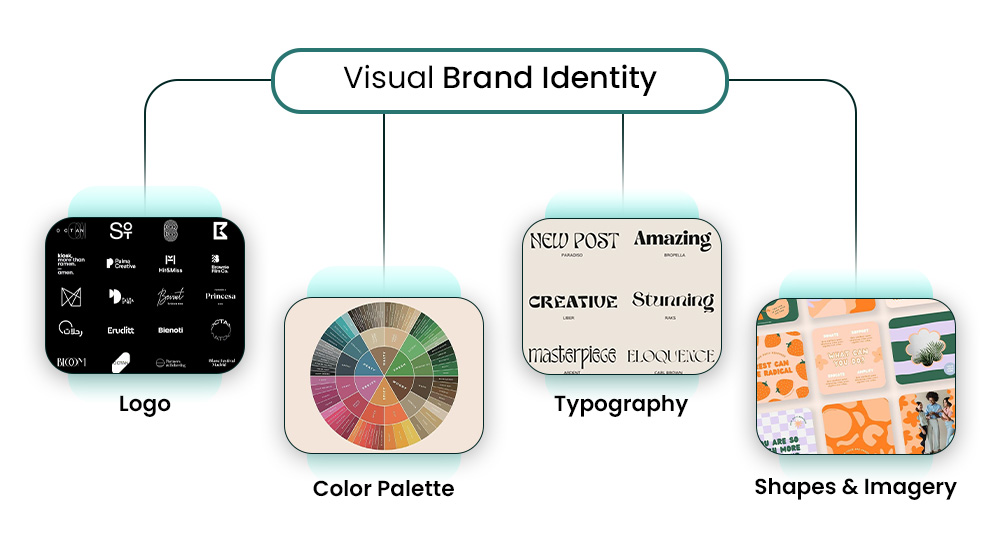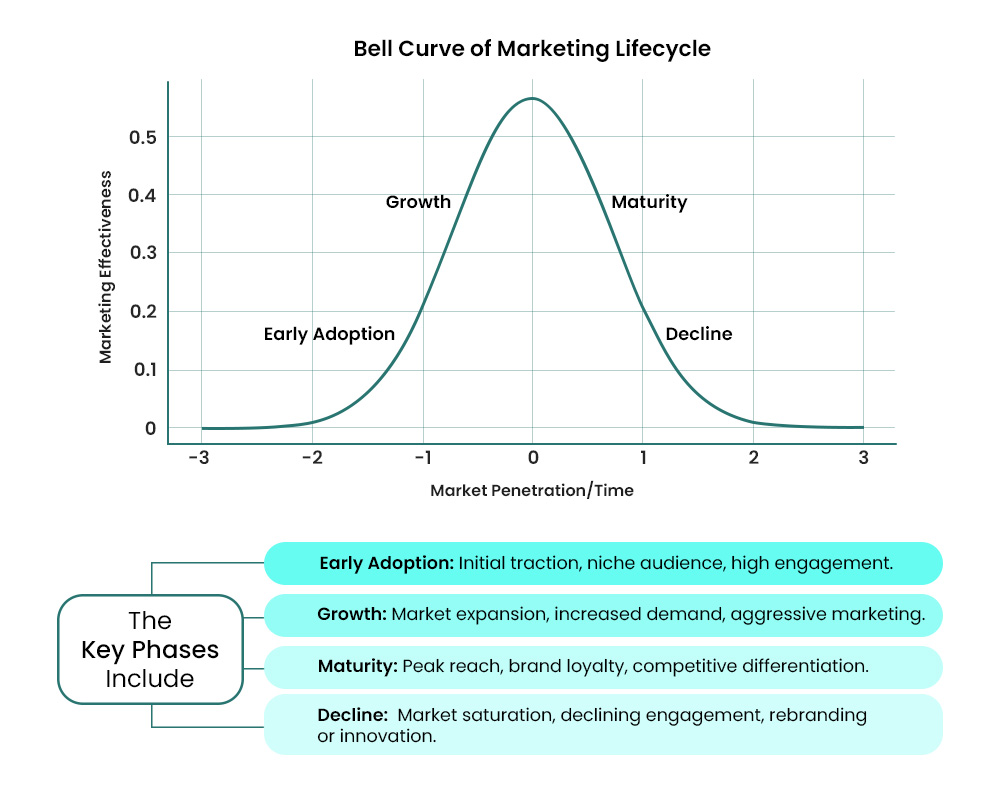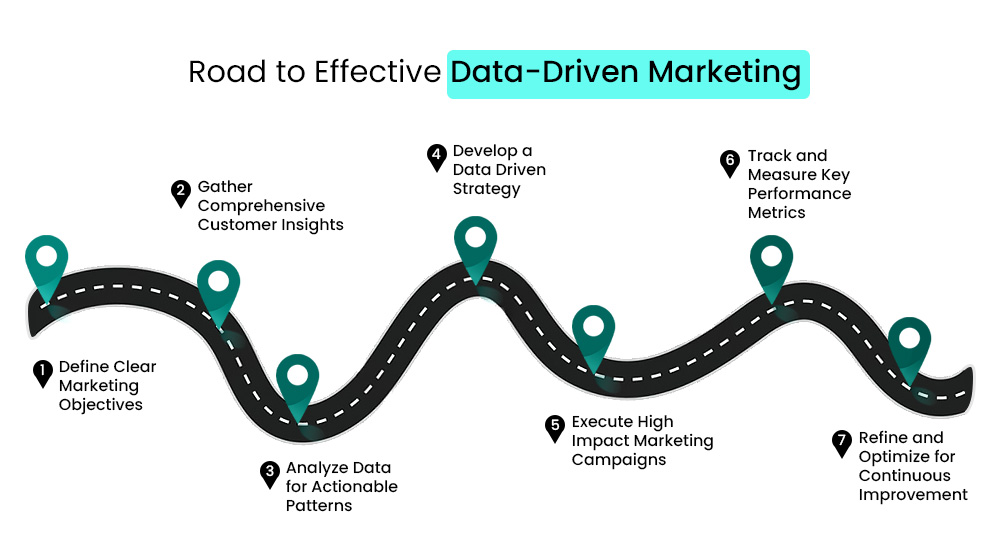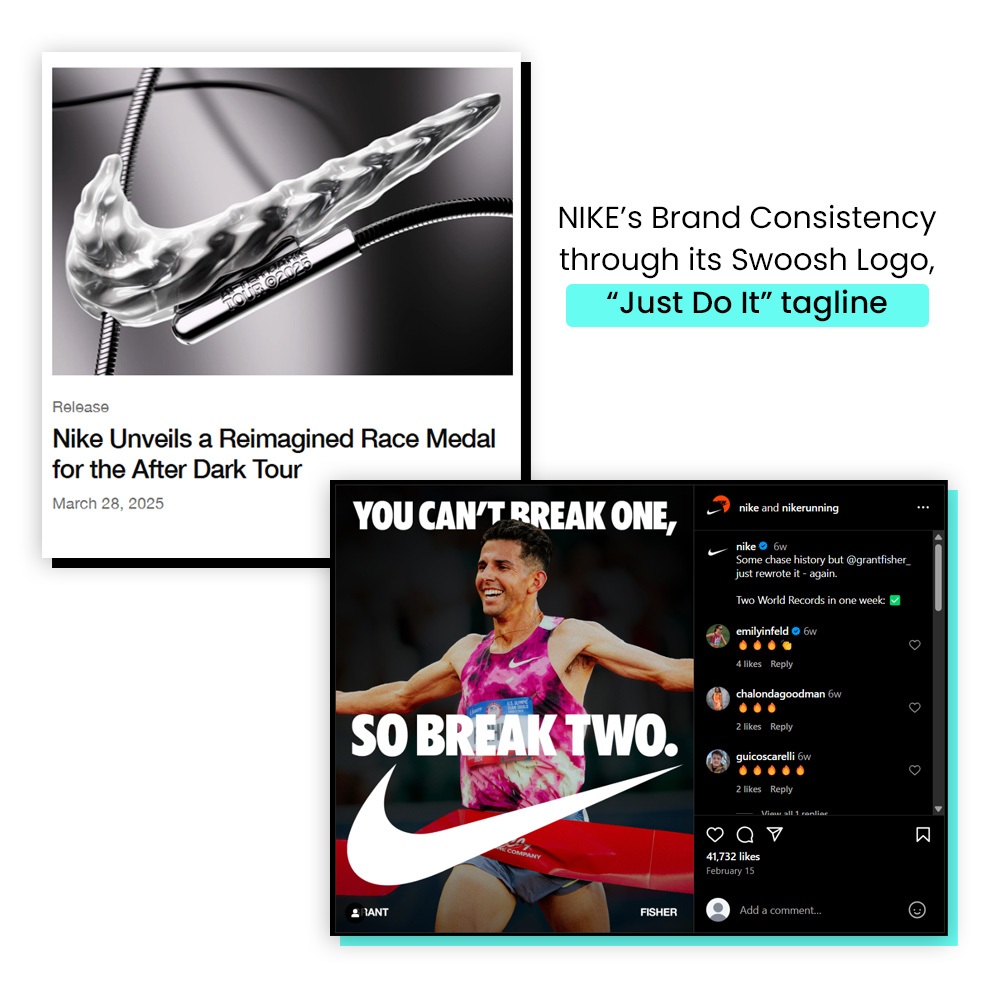7 Effective Online Branding Strategies to Stand Out Online in 2025
No Online Presence? Then You’re Not in the Game.
It’s 2025, and let’s be honest—everyone is glued to their phones. From searching for the perfect pair of shoes to checking reviews for the best restaurant, the digital world has become an inseparable part of our daily lives.
But with so much content competing for attention, standing out is more challenging than ever. Your audience is constantly scrolling, searching, and engaging, so if they can’t find you, they’ll find someone else. That’s why online branding has never been more important than it is today.
In this blog, we will explore what online branding is, its importance, and the 7 most effective branding strategies that will help you stand out in the crowd.
What is Online Branding?
Online branding, also known as e-branding or digital branding, is the strategic process of establishing and reinforcing a brand’s identity. It goes beyond simple promotion, focusing on creating a cohesive brand experience that resonates with audiences.
Some effective ways to do this include:
Create Brand Excitement—Engage with your audience on social media to spark interest and build brand recognition.
Build Strong Relationships—Use email marketing to stay connected and keep your brand top-of-mind.
Tell Your Story—Write blog posts and articles that showcase your brand’s voice and values while driving traffic.
Enhance Brand Visibility—Optimise your online presence to ensure your brand is easily discoverable by the right audience.
Why is Online Branding Strategy Important?
Consumers rely heavily on the internet to discover, research, and engage with brands, so having a strong and consistent online presence is no longer optional. It is a necessity.
1. Strengthens Customer Loyalty
A trusted brand keeps customers coming back. A survey proves this, revealing that 81% of consumers consider brand trust crucial when making a purchase. Hence, when customers trust a brand, they choose it over competitors.
2. Creates a Strong Impression
A unique name and logo differentiate a business from competitors. Digital branding ensures that the brand stands out and leaves a lasting impact. A well-crafted identity makes the business memorable.
3. Helps You Stand Out
Effective online branding highlights a business better than its competitors. It attracts customers by showcasing unique value. Hence, a strong brand presence sets the business apart in the market.
4. Enhances Customer Experience
A well-designed identity makes the business easy to recognize and recall. So, strong branding improves customer engagement and connection.
7 Powerful Online Branding Strategies for 2025
Now that you know the importance, it’s time to find out the online branding strategies for 2025 to make your brand stand out.
1. Creating a Memorable Brand Identity
People often misunderstand logos and taglines as the sole elements of brand identity. However, it is much more than that. All those elements that help your business to be seen and remembered fall under this category of brand identity.
Here are some of the important elements:
Building a Strong Brand Story
Relatability is one of the key elements when creating a brand identity. Consumers are eager to learn about the brand to understand its origin, the reason why it was made, and its next goal. Authentic and emotionally engaging brands set the bar high for others in their niche.
Defining Brand’s Core Values and Purpose
To create a powerful brand, you need to clearly define who you are, what you stand for, and why you exist. Consumers today are drawn to brands that align with their beliefs and values.
For example, a sustainable fashion brand might focus on eco-conscious production and ethical sourcing, while a tech startup will emphasize innovation.
Developing Unique Visual Identity through Online Branding Strategies

Having a Consistent Brand Voice & Tone
Every individual is distinguished on the basis of their tonality and voice. Similarly, your brand should also have a unique tone and voice as its identity.
Brand Voice: You need to decide whether your brand should have a formal, friendly, authoritative, or playful voice. For example, Apple as a brand maintains an innovative and professional voice, while brands like Wendy’s thrive on humour and sarcasm.
Tone Adjustments: While your brand voice remains consistent, the tone may shift depending on the context. Your social media posts might be more casual, but email responses should remain professional.
2. Creating Content That Adds Value
Since consumers are mostly on their phones, the content they engage with plays a crucial role in shaping their perception of your brand. In fact, a survey found that 63% of content marketers acknowledged content marketing as a key factor in building brand loyalty.
Read: Top Content Marketing Trends to Watch Out for Businesses in 2025
Understand Your Audience’s Pain Points
Most brands think posting their products or about their services is enough for branding. But that’s the biggest mistake you can make. You need to first understand your audience’s POV, conduct market research, engage with your customers through social media, and analyze search trends to identify their biggest questions and concerns.
Educate and Inspire with High-Quality Information
Take Sephora, for example. Beyond selling beauty products, the brand has built a strong identity by offering expert-backed tutorials, skincare routines, and product guides. This commitment to high-quality content not only educates consumers but also strengthens Sephora’s brand authority and trust.
Branding isn’t just about visibility—it’s also about credibility. Posting content for the sake of it won’t set your brand apart. Instead, every piece of content should be high-value, informative, and aligned with your brand’s voice. Consumers are more likely to trust and stay loyal to brands that provide insightful, educational content rather than just promotional messages.
Here’s how high-quality content reinforces your brand identity:
How-to guides – Establish your brand as a go-to resource for solving customer problems
Case studies – Showcase real-world success to build brand credibility
Industry trends & insights – Position your brand as a thought leader in your niche
Expert interviews – Align your brand with trusted voices to enhance authority
Leverage Storytelling for Emotional Connection
People connect with stories more than with facts alone. So, using storytelling in your content gives a human touch to your brand and makes your message more engaging. You can share real customer experiences, behind-the-scenes brand stories, or personal journeys that align with your brand values. This will help in building trust and creating a loyal following.
3. Finding Marketing Sweet Spot
Striking the right balance is important for online branding in 2025. Let’s understand this with the concept called the ‘Bell curve in marketing. ’

Branding thrives on balance. Imagine a bell curve—too little marketing and your brand goes unnoticed; too much and you overwhelm your audience. The key is hitting the sweet spot where visibility builds trust without causing fatigue.
Enter the Marketing Rule of 7—your audience needs to see your brand at least seven times before they engage. But it’s not just about repetition; it’s about strategic, meaningful touchpoints that reinforce your brand’s identity and value.
To achieve this balance:
Leverage your brand’s strengths – What makes you unique? Own it.
Address customer pain points – Speak to their needs, not just your features.
Capitalize on trends & gaps – Position yourself where demand is rising.
Branding isn’t about being everywhere—it’s about being consistently relevant in the right places. Nail the balance, and your brand becomes not just seen but remembered.
4. Understanding the Market to Stay Ahead
Market research is your secret weapon.
This includes knowing what’s in trend, who your competitors are, and what your customers expect. You can gather data from surveys and focus groups to social media analytics and customer feedback. The best businesses don’t just sell products; they build relationships. A key part of building these relationships is understanding what resonates with the audience.
Market research fuels online branding by helping businesses craft messaging, visuals, and experiences that align with customer expectations. When a brand consistently delivers content that speaks to its audience’s interests, it builds trust, strengthens identity, and fosters long-term loyalty.
Take Airbnb, for example. By studying travel trends and customer behavior, they design highly personalized marketing campaigns that inspire and engage travelers worldwide. This data-driven approach ensures that the brand remains relevant, aspirational, and deeply connected to its audience.
5. Leveraging Data-Driven Marketing

In today’s digital landscape, relying on guesswork for your online branding strategy can be one of the biggest mistakes you can make. Understanding your audience’s behaviour and preferences through data analytics is crucial for making informed decisions that drive success.
By analysing purchase trends, you can determine which products are in high demand and prioritise them in your marketing efforts. On the other hand, data can highlight products that need more promotion, helping you allocate resources efficiently and boost sales.
Here are some ways you can do this:
A/B Testing: Experiment with different messaging, visuals, and campaign strategies to see what relates most to your audience.
Social Media Analytics: Identify which content formats (videos, carousels, or infographics) drive the highest engagement and refine your approach.
Real-Time Monitoring: Watch your campaigns as they run so you can quickly make changes to get better results.
Read: All You Need to Know about Consumer Behavior in eCommerce
6. Growing Through Strategic Partnerships
According to the CMO Council, 85% of the brands look for partnerships as the best way to grow their business.
Collaborations have long been a powerful tool for business growth, but in the digital age, they play an even bigger role in shaping your brand’s success. When done right, online partnerships can elevate your brand’s credibility and significantly boost revenue.
A well-chosen collaboration acts as a golden stamp of approval, reinforcing trust in your brand. When a respected name aligns with yours, customers are more likely to take notice—and believe in what you offer.
McDonald’s × Travis Scott
When McDonald’s teamed up with rapper Travis Scott, it wasn’t just about selling a meal. The fast-food giant introduced the limited-edition Travis Scott Meal, accompanied by exclusive merchandise, blending fast food with music, fashion, and pop culture.
Why it worked:
- Connected McDonald’s with a younger and trend-focused audience
- Created massive social media buzz
- Limited-time exclusivity increased demand
7. Keeping Your Brand Consistent Everywhere
Maya Angelou famously said: “People will forget what you said, people will forget what you did, but people will never forget how you made them feel.”

When applied to branding, consistency in your message, visuals, and values ensures people always feel the same trust and connection with your brand. Take Nike, for example. When you see the swoosh logo or hear the phrase “Just Do It,” you instantly think of the brand. That’s the power of consistency.
Whether on their website, social media, or billboards, Nike maintains the same design aesthetics, messaging tone, and brand values. Their Instagram posts feature high-energy action shots with minimalist captions. Nike’s marketing campaigns—whether featuring Serena Williams or an everyday runner—always reinforce their core message of perseverance and excellence.
Conclusion
In today’s digital-first world, your brand’s online presence isn’t just important—it’s everything. By crafting a compelling identity, staying consistent, and leveraging data-driven strategies, you can turn your brand into a powerful force that stands out from the noise.
The key? Build trust, tell stories that resonate, and engage your audience where they are. Whether it’s refining your brand voice, creating value-driven content, or forming strategic partnerships, every step you take strengthens your connection with potential customers.
If you’re looking to elevate your brand and make a lasting impact, get in touch with Mastroke—we’d love to help you make an impact.
Frequently Asked Questions
1. What are the 4 types of branding strategies?
Online branding is all about how a business connects with people. Here are the four main branding strategies:
- Product Branding – Focuses on a single product, like Coca-Cola’s iconic red can.
- Corporate Branding – The entire company is the brand, like Apple’s premium image across all products.
- Service Branding – Builds trust around a service, like FedEx’s reliability.
- Personal Branding – Centers around an individual, like Elon Musk.
2. What is successful branding?
Strong online branding is the one that builds trust, makes people feel something, and keeps them coming back. It’s clear in its message and consistent in its look and feel. In short, successful branding means standing out for the right reasons and creating real connections with customers.
3. What are the 5 C’s of branding?
The 5 C’s of branding are key elements that help build a strong and successful brand:
- Clarity – Having a clear message and purpose helps customers instantly understand what it stands for.
- Consistency – Branding elements like logos, colours, and tone should remain the same across all platforms.
- Credibility – Trust is essential, so delivering quality products and services is the key.
- Connection – Creating an emotional bond with the audience through storytelling and engagement.
- Commitment – Staying true to brand values over time builds loyalty and long-term success.
